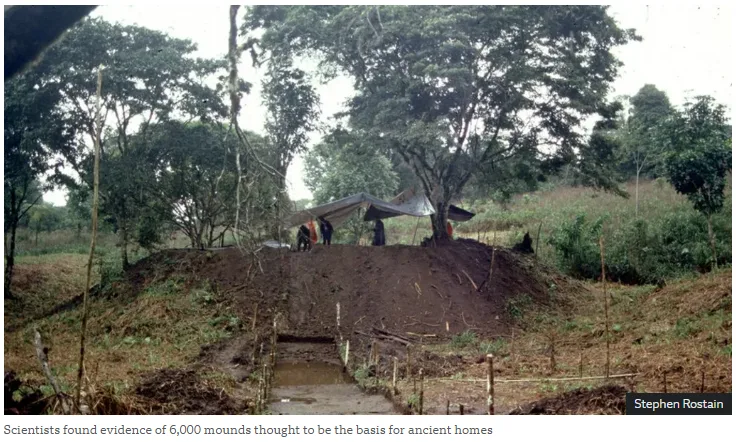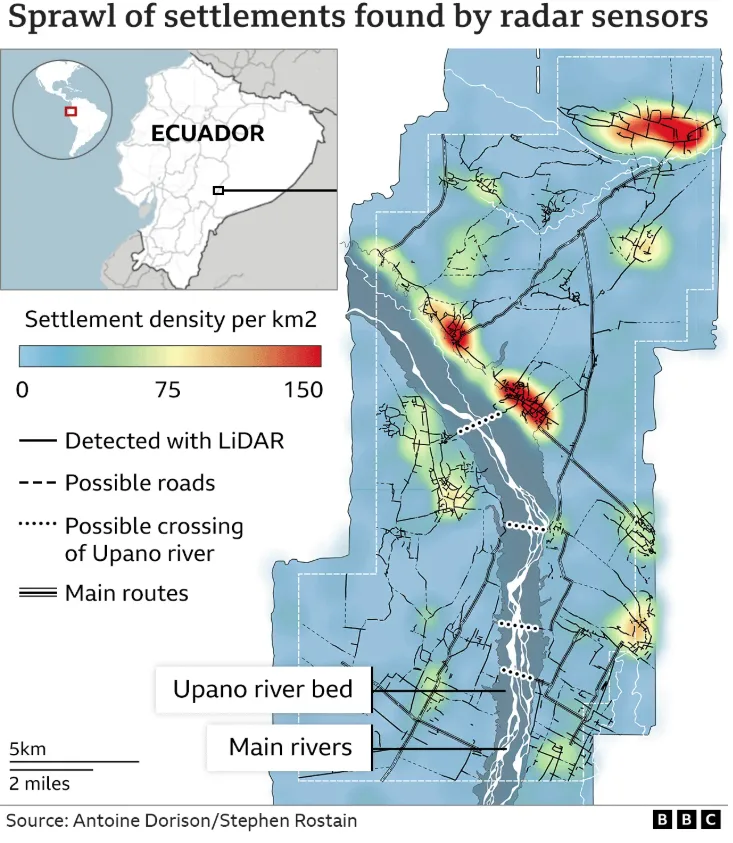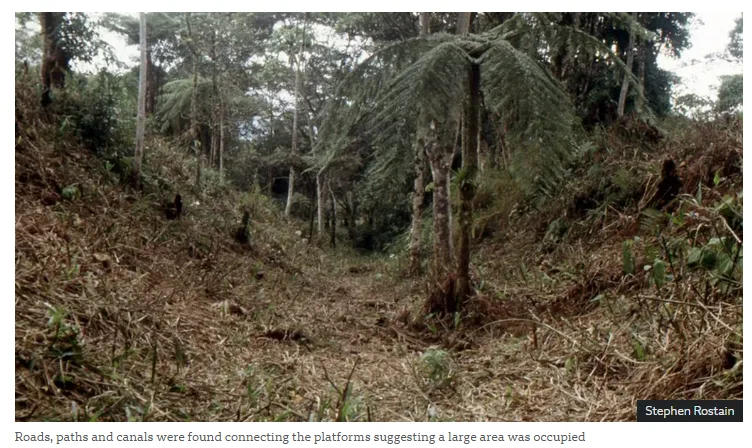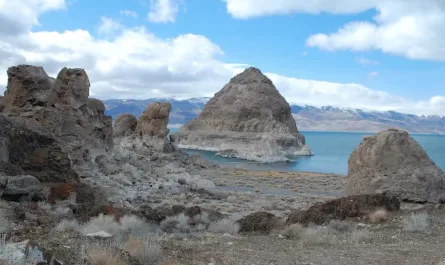A sprawling ancient city, concealed for millennia beneath dense Amazonian vegetation, has been discovered, revolutionizing our understanding of the region’s historical inhabitants. Located in the Upano region of eastern Ecuador, this find challenges the notion that the Amazon was solely home to nomadic groups or small settlements.

The city, constructed around 2,500 years ago, thrived for up to 1,000 years. It featured an intricate network of roads and canals connecting houses and plazas, set against the backdrop of a volcano that enriched the soil but may have contributed to the society’s eventual decline. “This is older than any other known site in the Amazon. It forces us to rethink our Eurocentric views of civilization,” said Professor Stephen Rostain, lead researcher from France’s National Centre for Scientific Research.
The discovery overturns stereotypes of Amazonian cultures as primitive. “People imagine small, scattered groups living simply, but this reveals complex urban societies,” noted co-author Antoine Dorison. Archaeologists estimate the city’s population ranged from tens of thousands to possibly hundreds of thousands.

Using LiDAR technology, researchers mapped a 300 sq km (116 sq mile) area, revealing 6,000 rectangular platforms, each about 20m (66 ft) by 10m (33 ft) and 2-3m high, grouped around plazas. These platforms, built by cutting into hills and layering earth, served as homes or ceremonial spaces. A notable complex at Kilamope featured a 140m (459 ft) by 40m (131 ft) platform. The city’s road network, including a 25km (16-mile) stretch with precise right angles, was described by Dr. Dorison as “sophisticated” and possibly tied to ceremonial or symbolic purposes.
Canals with ditches managed the region’s abundant water, while some ditches blocking settlement entrances suggest defenses against external threats. Initially identified in the 1970s, the site’s full scope emerged after 25 years of research, revealing a society potentially larger than the Mayan civilizations of Mexico and Central America. “This is like discovering a new civilization with unique architecture and land use,” said José Iriarte, an archaeologist from the University of Exeter uninvolved in the study.

The Upano and Kilamope people likely relied on agriculture, cultivating maize and sweet potatoes and consuming “chicha,” a fermented beverage. Excavations uncovered pits, hearths, jars, grinding stones, and burnt seeds, offering glimpses into daily life. The findings, including distinctive octagonal and rectangular platforms, are considered unique for South America.
Professor Rostain, who faced skepticism early in his career about ancient Amazonian societies, expressed satisfaction with the discovery. “I was told no complex groups lived here, but I pursued it anyway,” he said. The team plans to survey an adjacent 300 sq km (116 sq mile) area to further uncover the extent of this remarkable civilization.
Source: bbc.com


